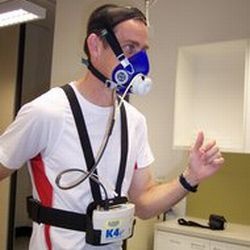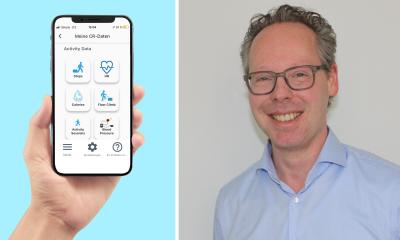Cardiac rehabilitation by mobile phone
The Cardiomobile developed by the Institute of Health and Biomedical Innovation at Queensland University, Australia, contains
a Mini ECG and a GPS system linked to a mobile phone via Bluetooth. That way heart patients can do rehabilitation exercises
any place and any time they want to.

Scientists from Queensland University of Technology (QUT) in Brisbane, Australia, have teamed a mobile phone with a miniature heart monitor and a GPS device, as part of research aimed at tackling the low participation rates of heart patients in cardiac rehabilitation.
Charles Worringham, MD, of QUT’s Institute of Health and Biomedical Innovation said the Cardiomobile monitoring system, developed by Alive Technologies in Queensland, Australia, was being further developed and trialed together with QUT under an ARC Linkage Grant.
“The program allows people who have been in hospital for a heart attack or heart surgery to undergo a six-week walking exercise rehabilitation program wherever it's convenient, while having their heart signal, location and speed monitored in real time,” Worringham said.
“We are trying this approach because 80 percent of cardiac patients never complete recommended hospital outpatient rehabilitation programs, despite the fact that they cut recurrent heart attacks by 17 percent, substantially reduce deaths, prevent re-hospitalization, and improve both function and quality of life,” he added.
The Cardiomobile system works by the patient attaching to their chests a mini ECG monitor and wearing a cap with a lightweight GPS receiver, both connected to a mobile phone via Bluetooth, according to QUT.
“It's not because they don't want to take part, it's usually because they cannot get to the hospital's program easily, because there simply isn't one nearby, or because work or family commitments take priority,” Worringham said.
“Patients phone in at the start of their scheduled session and then their heart signal, location, speed and gradient are monitored in real-time over the web by a qualified exercise scientist, who guides the patient's program and checks their progress,” he said.
"If there is any problem with the heart signal we can immediately contact the patient, and consult with the cardiologist if needed,” he added.
"Although serious problems in cardiac rehab are very rare, if there is an emergency we can direct the paramedics to the exact location without delay. While this approach is different from a hospital-based program, we are talking about a group of patients who either wouldn't exercise at all or would have to go it alone - something many lack the confidence for after heart attacks and surgery,” Worringham said.
Photo: QUT
10.07.2008











